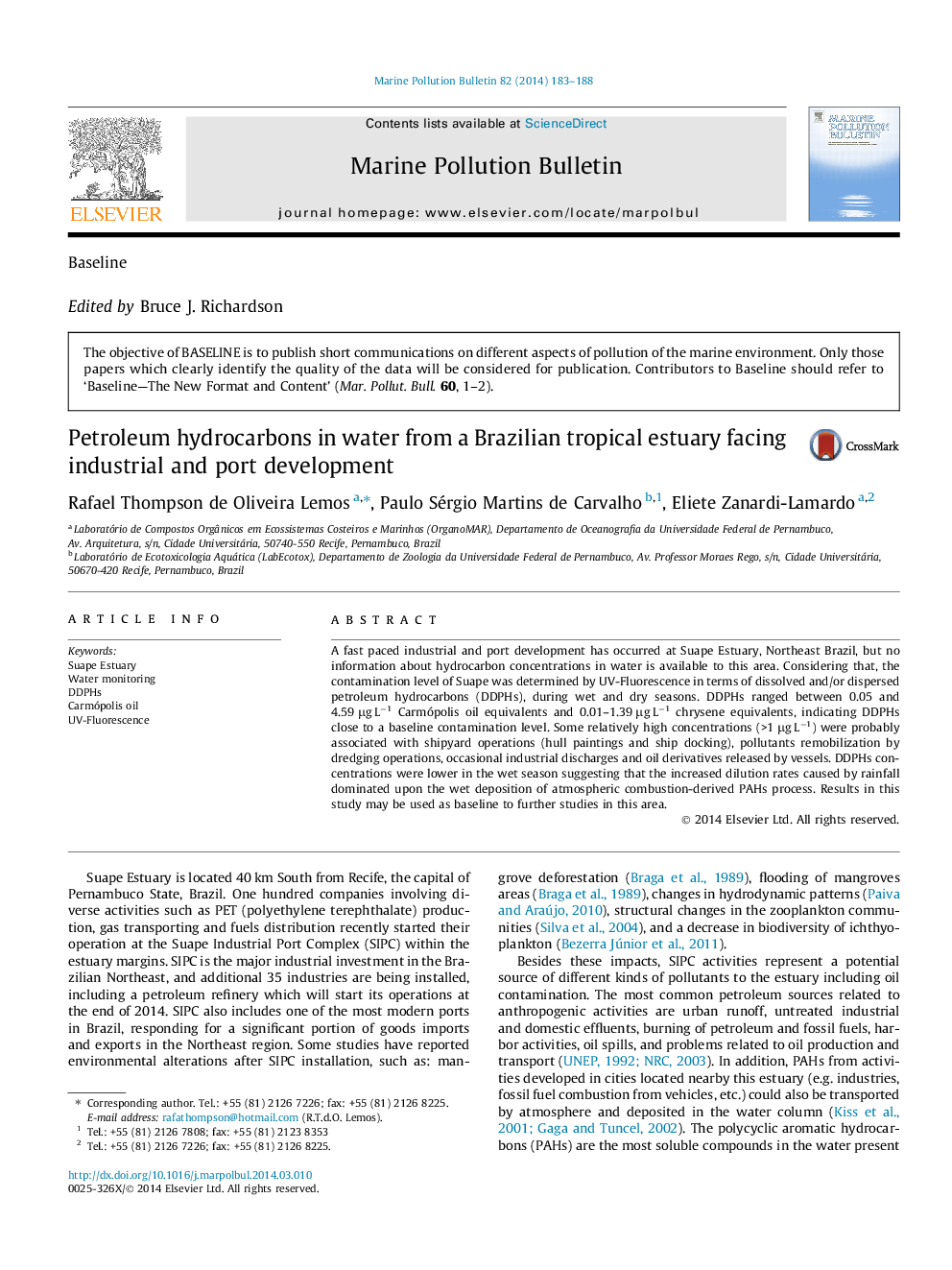| Article ID | Journal | Published Year | Pages | File Type |
|---|---|---|---|---|
| 6358418 | Marine Pollution Bulletin | 2014 | 6 Pages |
Abstract
A fast paced industrial and port development has occurred at Suape Estuary, Northeast Brazil, but no information about hydrocarbon concentrations in water is available to this area. Considering that, the contamination level of Suape was determined by UV-Fluorescence in terms of dissolved and/or dispersed petroleum hydrocarbons (DDPHs), during wet and dry seasons. DDPHs ranged between 0.05 and 4.59 μg Lâ1 Carmópolis oil equivalents and 0.01-1.39 μg Lâ1 chrysene equivalents, indicating DDPHs close to a baseline contamination level. Some relatively high concentrations (>1 μg Lâ1) were probably associated with shipyard operations (hull paintings and ship docking), pollutants remobilization by dredging operations, occasional industrial discharges and oil derivatives released by vessels. DDPHs concentrations were lower in the wet season suggesting that the increased dilution rates caused by rainfall dominated upon the wet deposition of atmospheric combustion-derived PAHs process. Results in this study may be used as baseline to further studies in this area.
Keywords
Related Topics
Physical Sciences and Engineering
Earth and Planetary Sciences
Oceanography
Authors
Rafael Thompson de Oliveira Lemos, Paulo Sérgio Martins de Carvalho, Eliete Zanardi-Lamardo,
